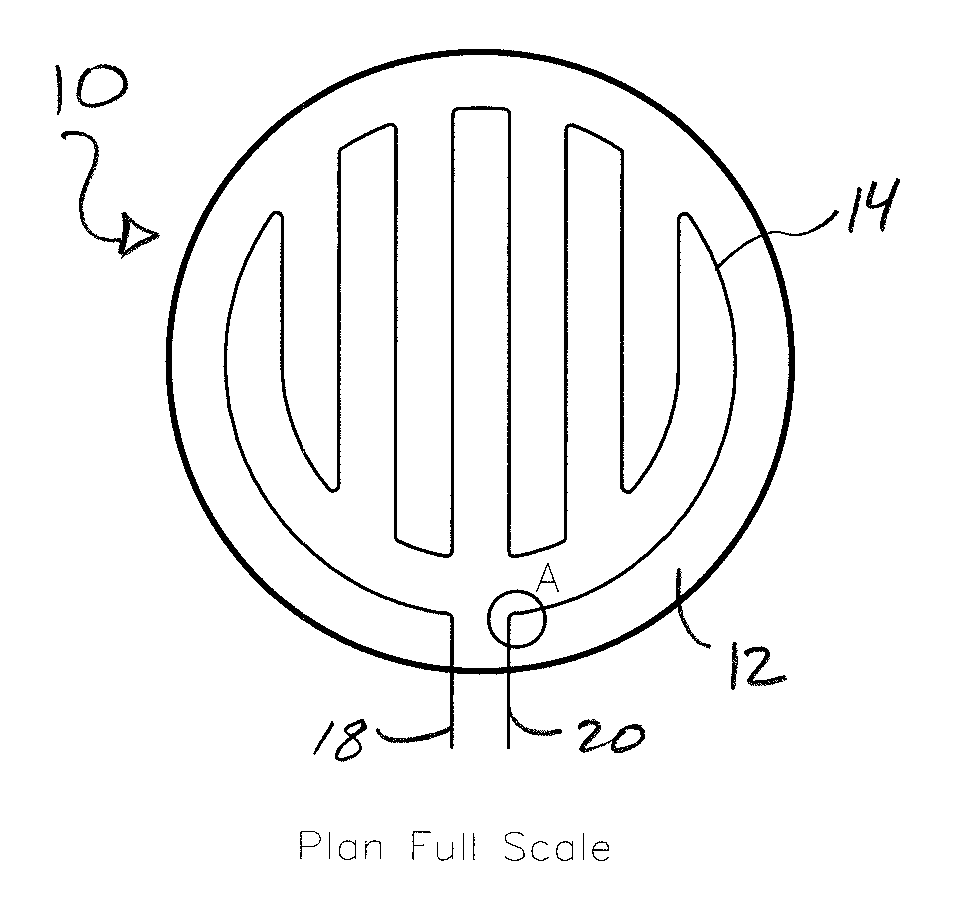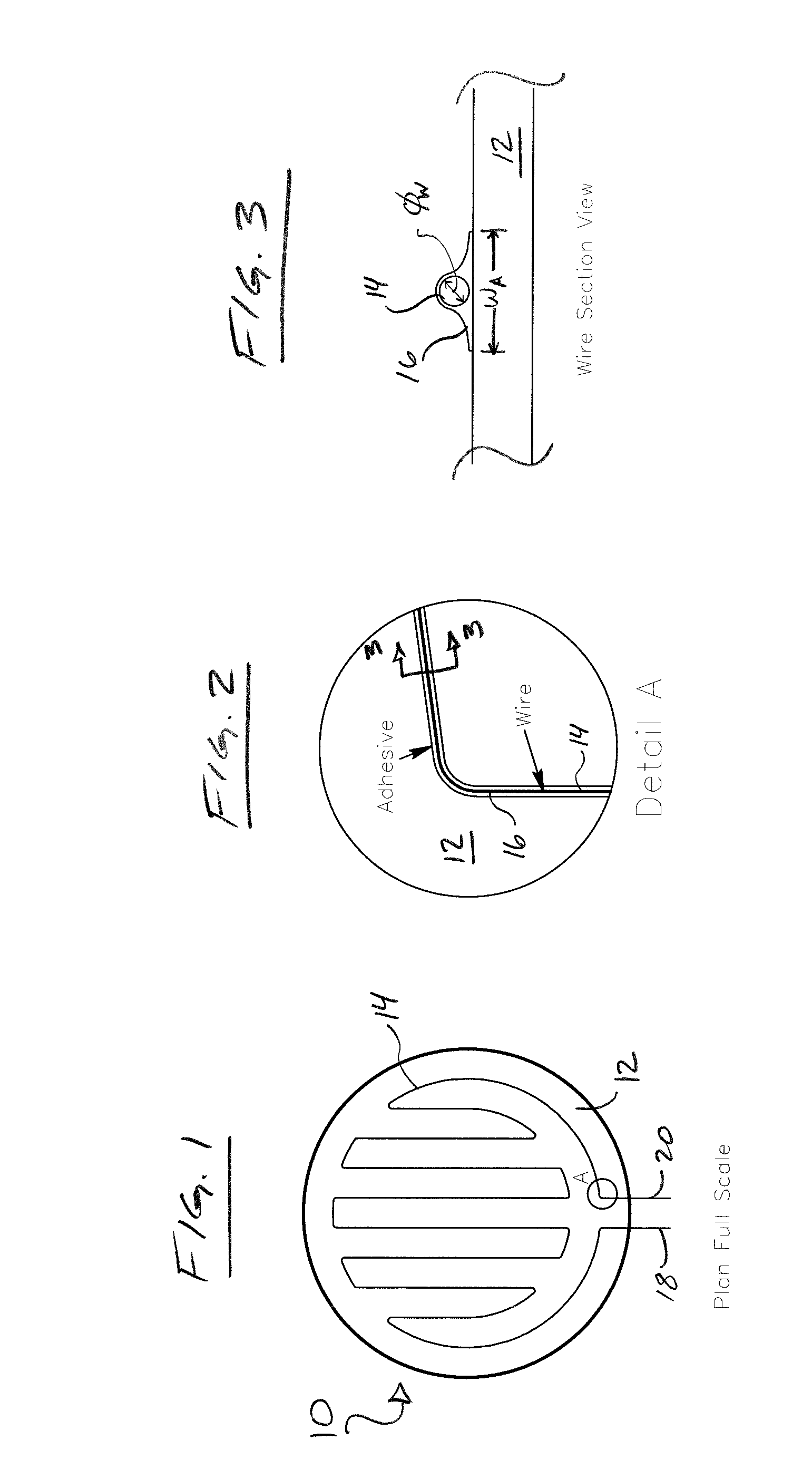Thermally conditionable light transmitting subassembly
a sub-assembly and light technology, applied in the direction of resistor details, heat exchanger elements, transportation and packaging, etc., can solve the problems of large temperature gradient between the heated perimeter and the center of the lens/window, system or device inoperative, and alter the system/device performan
- Summary
- Abstract
- Description
- Claims
- Application Information
AI Technical Summary
Problems solved by technology
Method used
Image
Examples
Embodiment Construction
[0016]A contemplated, non-limiting representation of the article, subassembly or component of the subject invention is generally depicted in FIG. 1, with select diagrammatic details thereof provided in FIGS. 2 & 3. It is to be understood, and as should be readily appreciated, matters of size, configuration, component / material selection, etc. are dictated by functional objectives and / or performance requirements of a given application. Moreover, while the term “light” as used throughout this disclosure may have a contextual meaning in relation to visible light (i.e., the visible spectrum generally corresponding to wavelengths within a range of about 380-750 nm), it is nonetheless to be afford a broad reading and meaning, namely, the term is intended to also generally encompass electromagnetic energy or radiation beyond that associated with the visible spectrum.
[0017]With particular reference to FIG. 1, there is depicted a thermally conditionable light transmitting article 10 of the su...
PUM
 Login to View More
Login to View More Abstract
Description
Claims
Application Information
 Login to View More
Login to View More - R&D
- Intellectual Property
- Life Sciences
- Materials
- Tech Scout
- Unparalleled Data Quality
- Higher Quality Content
- 60% Fewer Hallucinations
Browse by: Latest US Patents, China's latest patents, Technical Efficacy Thesaurus, Application Domain, Technology Topic, Popular Technical Reports.
© 2025 PatSnap. All rights reserved.Legal|Privacy policy|Modern Slavery Act Transparency Statement|Sitemap|About US| Contact US: help@patsnap.com


